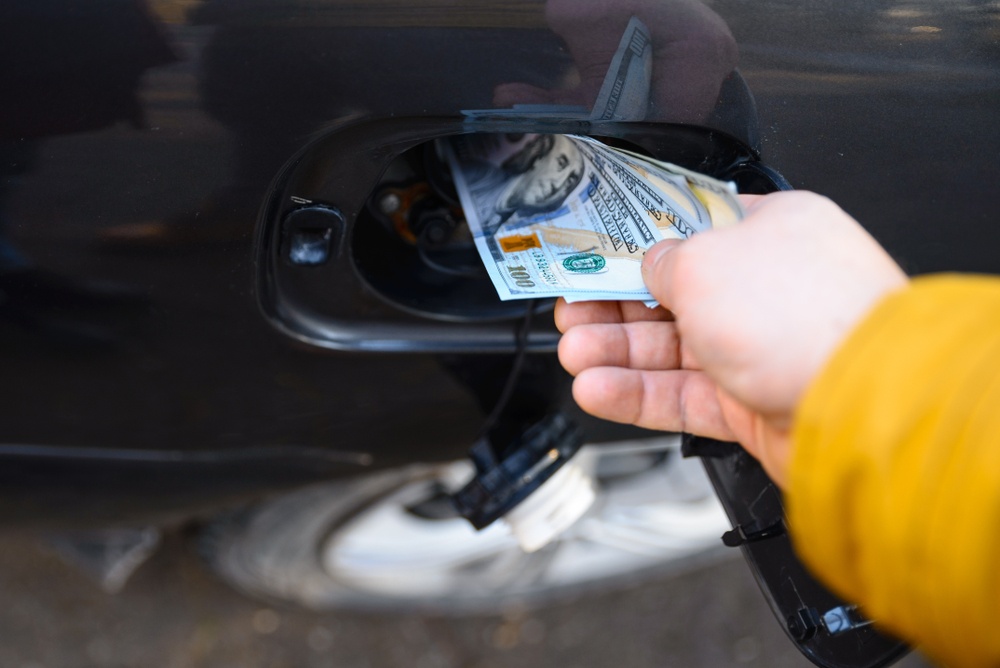Between long commutes, daily errands, and weekend getaways, the cost of gas and other transportation expenses can quickly eat away at your monthly budget. But what if you could turn those necessary travel costs into an opportunity to earn more—whether it’s cash back, loyalty points, or other valuable perks? With a bit of strategy, it’s possible to offset rising gas prices and even get ahead. In this guide, we’ll explore various tactics to maximize your rewards and save money on transportation, without sacrificing your lifestyle or convenience.
1. Pick the Right Rewards Credit Card
One of the simplest ways to earn more on gas is to use a rewards credit card that specifically offers higher returns on fuel purchases and other transportation spending.
- Look for High Cash Back or Points on Gas
Some cards provide elevated cash-back rates—anywhere from 2% to 5%—on gas purchases. Others may offer point bonuses for every dollar spent at gas stations, rideshares, and public transportation. Compare options to find a card that aligns with your spending habits. - Annual Fees vs. Rewards
Some premium cards with annual fees may offer greater rewards. Crunch the numbers: if the higher earnings outweigh the cost of the annual fee, it may be worth it. Alternatively, you might prefer a no-annual-fee card if you don’t spend enough on gas or travel to justify the extra cost. - Introductory Bonuses
Many rewards cards feature a substantial sign-up bonus if you spend a certain amount within the first few months. Depending on how frequently you drive and spend on gas, you could hit that threshold more quickly than you think.
2. Take Advantage of Gas Station Loyalty Programs
In addition to credit card rewards, gas station loyalty programs can further boost your earnings:
- Branded Station Rewards
Many major gas station chains—like Shell, BP, or ExxonMobil—offer free loyalty programs where you earn points or cents off per gallon. Over time, these savings can add up significantly, especially if you consistently fill up at the same brand. - Stacking With Grocery Rewards
Some grocery store chains partner with gas stations to offer discounts at the pump based on your in-store spending. By aligning where you shop for groceries with where you buy gas, you can amplify your savings. - Check for Partner Promotions
Certain loyalty programs run limited-time promotions, such as double or triple points on specific days or when using certain payment methods. If it fits your routine, timing your fill-ups with these promos can yield extra benefits.
3. Use Technology and Apps to Your Advantage
Modern technology can help you track down the best deals and even earn cash back on your travel costs:
- Price Comparison Apps
Apps like GasBuddy or Waze let you see real-time gas prices in your area, helping you find the cheapest station nearby. Over the course of a year, choosing a station that’s 10 or 15 cents cheaper per gallon can lead to substantial savings—especially if you drive frequently. - Cash-Back Platforms
Some platforms and apps partner with specific gas stations and transportation services to offer additional savings or cash back. When you pay through the app or upload your receipt, you may receive a rebate or statement credit. - Rideshare and Transit Apps
If you use public transportation or rideshare services, explore monthly membership plans or subscriptions that may reduce per-ride costs. Additionally, check whether your credit card offers special perks, such as statement credits for rideshare usage.
4. Optimize Your Driving Habits
The less you spend on gas overall, the more of your earnings you get to keep (or reallocate to other areas). While not strictly about earning more cash back or points, reducing your total gas consumption is a strategic way to keep more money in your pocket:
- Combine Errands
Plan your day so that you run errands in a single trip rather than multiple short drives. Cold starts (starting a car from a cold engine) can be less fuel-efficient, so reducing them helps stretch your gas tank. - Carpool or Share Rides
If possible, split your commute or errands with friends and coworkers. Fewer cars on the road means less total gas spent. Some workplaces even offer incentives for carpooling, like preferred parking spots or stipends. - Drive Gently
Rapid acceleration, speeding, and abrupt braking can significantly lower fuel efficiency. Maintaining a steady speed and using cruise control on the highway can help you get more miles to the gallon.
5. Invest in Regular Vehicle Maintenance
A well-maintained vehicle runs more efficiently and uses less gas—meaning fewer fill-ups and more potential to capitalize on every cent:
- Proper Tire Inflation
Under-inflated tires can decrease your gas mileage by up to 3%. Check your tire pressure monthly and follow the manufacturer’s recommended levels. - Engine Tune-Ups and Oil Changes
Replacing spark plugs, cleaning air filters, and using the correct motor oil grade can optimize engine performance, leading to better fuel economy. - Wheel Alignment
Poor alignment can cause uneven tire wear and reduce mileage. Regular alignment checks keep your car running smoothly and efficiently.
6. Explore Alternative Transportation Options
Every time you opt for a different mode of transport, you’re not only reducing wear and tear on your car but also potentially freeing up funds for other uses:
- Public Transit
Depending on your city, bus or train passes may be cheaper than daily gas and parking expenses. Some employers even offer pre-tax benefits for purchasing transit passes. - Biking or Walking
While not always feasible for longer commutes, shorter trips via bike or foot can save money, reduce carbon emissions, and serve as a form of exercise. - Car-Sharing Services
If you only need a car occasionally, using a car-sharing service could be cheaper than owning or leasing a car, saving you insurance, maintenance, and gas costs.
7. Combine Offers and Promotions
If you really want to boost your earnings, look for ways to combine multiple promotions:
- Credit Card + Gas Station Loyalty
Pay with your gas rewards credit card at the pump, and also enter your loyalty program member number. You’ll earn rewards from both programs simultaneously. - App Cash Back + Discount Days
Some stations have discount days—like “Fuel Rewards Wednesday”—and your cash-back app might still pay you a rebate for using that station. Time your fill-ups accordingly, and you could stack savings on top of discounts. - Employer or Association Discounts
Certain employers, alumni associations, or membership clubs (like AAA or AARP) negotiate fuel discounts or partner programs. Check if you’re eligible for any of these under-the-radar perks.
8. Keep an Eye on Seasonal or Temporary Promotions
Gas stations and travel-related companies often run short-term promotions to entice customers. These might include increased cash-back percentages, double points, or cents-per-gallon discounts. Staying alert and adjusting your normal routine slightly could lead to a notable bump in rewards:
- Sign Up for Alerts
Subscribe to newsletters or text alerts from your favorite gas stations or credit card providers. They’ll inform you of timely promos. - Holiday and Travel Season Specials
During peak travel seasons or holidays, companies often roll out limited-time incentives like extra rewards on gas and transportation spending. Planning road trips around these deals can result in additional savings.
9. Monitor Your Rewards and Adjust Accordingly
Maximizing your gas and transportation earnings requires periodic review. Rewards structures, promotions, and your personal driving habits can evolve over time:
- Track Your Spending
Keep tabs on how much you’re earning back through credit card statements and loyalty program dashboards. If you notice that a large chunk of your spending is on rideshares or public transit, consider a credit card with better perks in those categories. - Reevaluate Cards and Programs Annually
Credit card companies frequently change reward rates, and gas station loyalty programs update their points systems. Comparing your current card’s rewards to new offers each year can ensure you’re still using the most rewarding solution. - Redeem Points Strategically
If you’re earning points, look for redemption options that give you the best value, whether that’s statement credits, travel rewards, or gift cards. Some programs even let you redeem points directly at the gas station, cutting your pump price in real time.
Even as gas prices and transportation costs fluctuate, there are plenty of ways to earn more and save money on every mile you drive or ride. By choosing a credit card that rewards you for fuel purchases, joining station loyalty programs, leveraging technology to find the best deals, and driving more efficiently, you can significantly offset your transportation costs. Don’t forget to explore alternative modes of travel when possible and to keep a watchful eye on evolving promotions, so you’re always optimizing your rewards strategy.
With a little planning and know-how, you can turn what’s typically a budget burden—gas and transportation—into a cost-effective venture that puts cash back in your pocket and helps you reach your financial goals.



